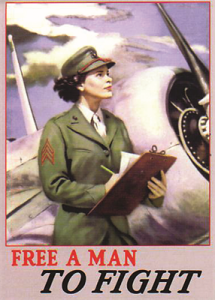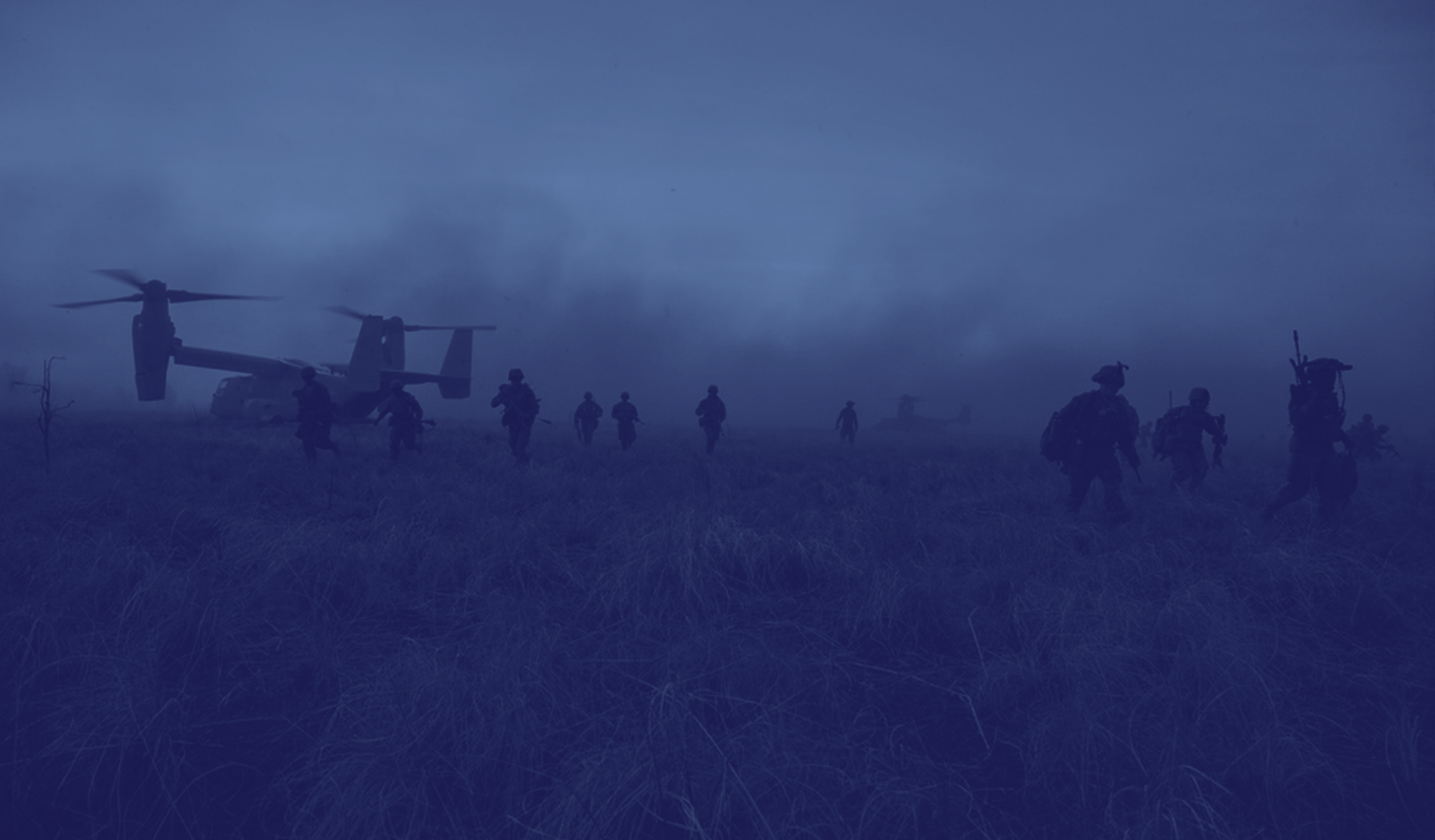Marine Corps Women Reserve
Marine Base San Diego 1943-1946

By Rick Huenefeld and Barbara McCurtis
‘Free a Man to Fight’ – the call to arms in February 1943 when the Women’s Reserve (WR) of the United States Marine Corps was activated. The first WR reported to Marine Corps Base (MCB) San Diego in September 1943 and more arrived virtually every week. By February 1944 there were 3000 WR serving in the San Diego area, at MCB, with Marine Air units at North Island, at Camp Elliot (now MCAS Miramar), Camp Mathews (now the site of the University of California at San Diego), and a myriad of smaller postings through the county.
One of the members of CA-2, Fairy Virginia “Tex” Cornwell remembers going to Texas to enlist and then taking the train to boot camp. She says that is how she earned her lifelong nickname. “Tex” had been working for one of the oil companies before her enlistment, and the Marine Corps seized on her experience and sent her to Camp Pendleton after boot camp to run the Motor Pool. “Tex” said she was only at her new job for a day or two when she the Commanding General at MCRD San Diego ordered her to the base to run his motor pool.
The small base in San Diego expanded rapidly to accept all of its new personnel. What had been Lott Field just inside Gate 4, MCB’s recreational fields, gave way to new construction of WR Barracks, quarters for their officers, a small exchange and rec hall, and other battalion facilities. By VJ Day there were 661 female enlisted Marines and 19 Female officers on duty at MCB – they had freed an infantry battalion worth of male Marines for combat while Corps wide 18,850 women freed up the equivalent of almost a division. HQMC final statistics at the end of the war recorded WRs in over 225 different specialties, filling 85 percent of the enlisted jobs at Headquarters Marine Corps and comprising one-half to two-thirds of the permanent personnel at major Marine Corps posts.
The WRs, came from around the nation, from varied backgrounds and for a variety of reasons and served in many different ways at posts and stations of the Corps. In San Diego they worked in the Message Center, the Film Library, in Administration, Separations Section, Payroll and the Recruit Classification Sections. They ran the PX, served in the Motor Pool as drivers and mechanics, in the Public Affairs Office, the Quartermaster’s Department, as Base Education and Recreation Officers, and even as the Secretary for the exclusively male Sea School, and as secretary in the base brig.
While they worked with male Marines all day their lives were otherwise fairly segregated. Many of the WW II veterans have stated that they were largely welcomed by the male Marines, although one told me at convention when she was snapping in at her new job the male Marine she was replacing muttered, “Nobody asked me if I wanted to be freed to fight.”
On base the women had their own chow hall, and a separate woman’s only section in the theater. Downtown San Diego featured a Servicewoman’s USO and a Transit Hotel for Servicewomen. The WRs wrote their own columns in the Base Paper, the Chevron, originally called ‘Skirtin the Base’ then ‘Women’s Reserve – Views and News’, and later as ‘Nobbin with Natalie’. They organized sports teams, winning the 11th Naval District Softball Championships in 1944 and 1945, as well as fielding a team in the Service Women’s League for Basketball, a bowling team, shooting team, a chorus, and a 50-woman fancy drill platoon.
The WRs were managed as a separate command directly supervised by woman officers, but provided augmentation to other existing organizational structures aboard the MCB and by December of 1943 there were enough WRs on MCB to justify the activation of the WR Battalion (WRBN). The WRBN was initially commanded by an experienced male officer, Major Troy Nelson with Second Lt Dorothy Miller as his Executive Officer. Second Lt Miller was promoted to 1st Lt in February 1944 and the next month relieved Major Nelson and became the Battalion Commander. She was promoted to Capt and then Major in June of 1945 and she remained the Battalion Commander until she released from active duty during the demobilization in April of 1946.
Women came into the MCB commands, and contributed to the base mission. Over time, the WR contributions changed attitudes; the best known example of this transformation of attitudes came from the top, the Commandant of the Marine Corps. In a simple statement General Holcomb spoke volumes: “Like most Marines, when the matter first came up, I didn’t believe women could serve any useful purpose in the Marine Corps . . .Since then, I’ve changed my mind.”
When the war ended, demobilization was both welcomed and regretted, as women of the Marine Corps Women’s Reserve changed back to civies and went home to resume their lives. The story of the Women’s Reserve Battalion of Marine Base, San Diego during the Second World War was not well known, even among Marines. As the base took on a new look, and a new name, The Marine Corps Recruit Depot, the stories of the Women of 1943 were put away, only resurrected on the annual birthday celebration in February, or when a visitor was looking for the old WM Barracks. The ladies of the greatest generation earned the title Marine, did what needed to be done, and quietly faded into the wave of demobilization after the war’s end.
Women arrived back on base as mobilized reserve members during the Korean War and eventually as regulars in the Corps. The female barracks was closed and eventually, like most of the wooden structures on base, torn down. Change is inevitable, and often for large institutions like the Marine Corps, a good thing. What is not so good is forgetting the past. The Women of WW II left a legacy which is not Women’s History, or Women Marine History, but MARINE CORPS HISTORY. We who wear, or have worn, Marine Green all owe them a debt of gratitude and they will not be forgotten.
The MCRD Museum team decided to resurrect the story of the women of 1943 in order to fix their place in Marine Corps Recruit Depot history. The new permanent exhibit tells the story of the base and is called the Marine Corps Women Reserve 1943-1946. It features the photographs, and uniforms of the era, and the text tells the story of that stalwart group of pioneers. The display has an open medal locker with uniforms ready for inspection. A mannequin in pin stripe green borrowed from the National Museum of the Marine Corps stands by for review. A case contains ration cards, gloves, a hand bag, coin purse and mirror, a hat box and several different female covers of the era. Recruiting Posters adorn the walls, and a large collage of photographs of the base, and the women who served on the base from 1943-1946, is prominently displayed. One special feature of the exhibit is the “Scuttlebutt Wall.” This wall is blank; it is waiting for the rest of the Women of 1943 to add their photographs, and become part of “herstory.”
The MCRD Museum’s new exhibit about the Marine Corps Women Reservists (WR’s) is now open! This exhibit explores the history of the WR’s who were responsible for keeping much of Marine Base San Diego (now the Marine Corps Recruit Depot) open during World War II. These pioneering ladies truly embodied the call to action, ‘Free a Man to Fight,’ releasing enough male Marines to form an infantry battalion.
